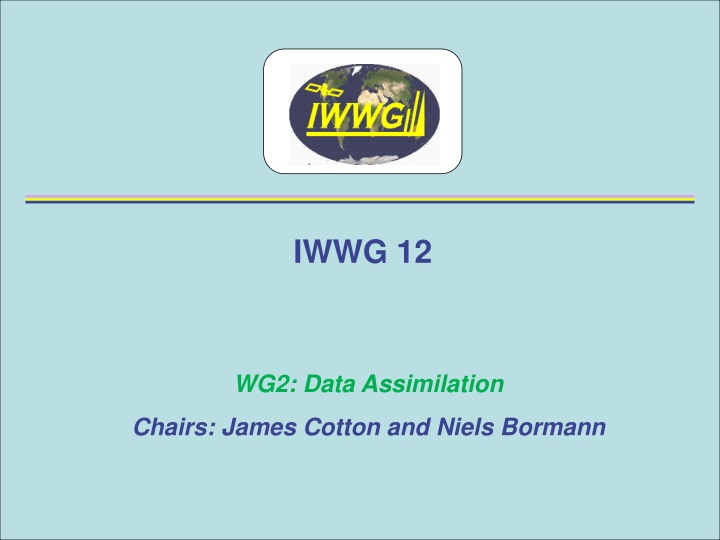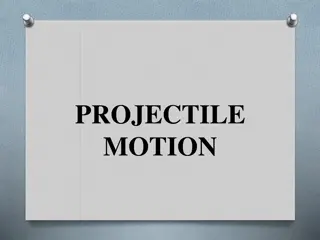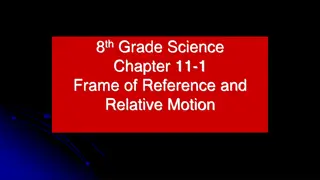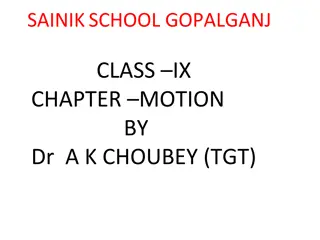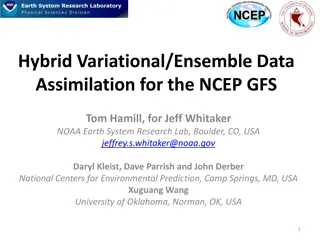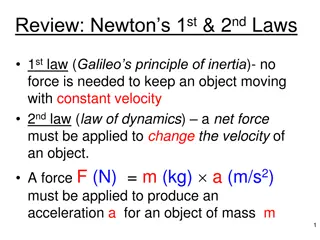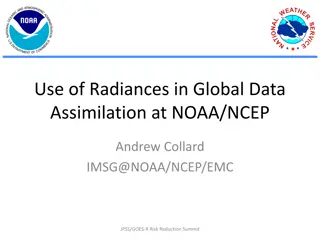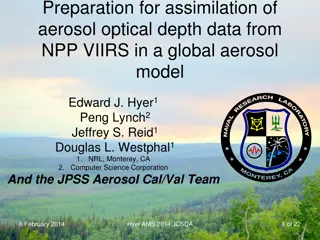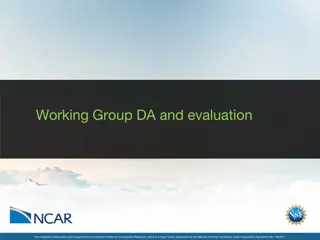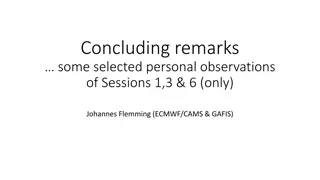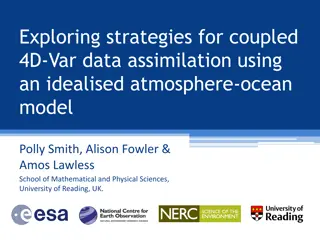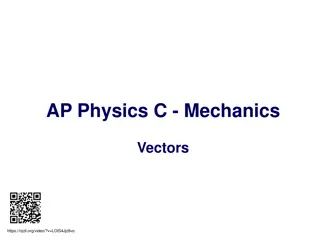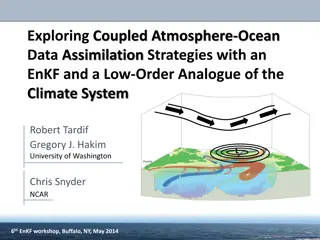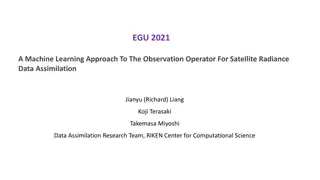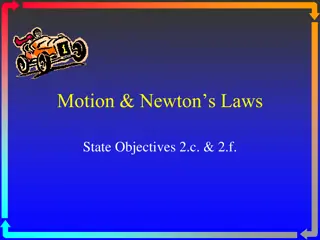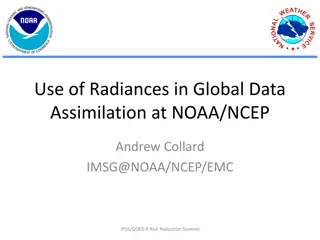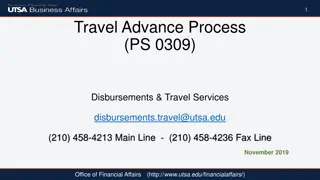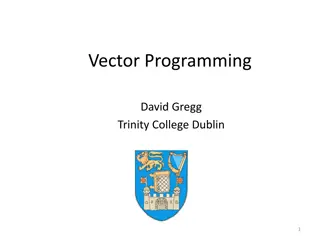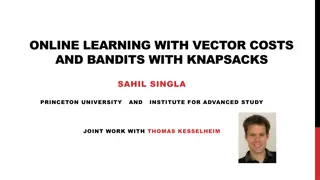Advances in Atmospheric Motion Vector Data Assimilation
The IWWG-12 WG2 focused on the integration of the GOES-R algorithm for AMVs by NESDIS, improvements in error characterization, representative level/layer for AMVs, advancements in MISR winds data, and other related topics like new BUFR sequences and reprocessed AMVs. Recommendations were made for quality control, error characterization, and further investigations into height assignment issues.
Uploaded on Oct 04, 2024 | 2 Views
Download Presentation

Please find below an Image/Link to download the presentation.
The content on the website is provided AS IS for your information and personal use only. It may not be sold, licensed, or shared on other websites without obtaining consent from the author.If you encounter any issues during the download, it is possible that the publisher has removed the file from their server.
You are allowed to download the files provided on this website for personal or commercial use, subject to the condition that they are used lawfully. All files are the property of their respective owners.
The content on the website is provided AS IS for your information and personal use only. It may not be sold, licensed, or shared on other websites without obtaining consent from the author.
E N D
Presentation Transcript
IWWG 12 WG2: Data Assimilation Chairs: James Cotton and Niels Bormann
Introduction of GOES-R algorithm for current GOES AMVs NESDIS will apply GOES-R algorithm to current GOES operationally. Tracking and height assignment changes. Plans for long overlap period appreciated by the group (Oct 2014 July 2015). Recommendation to NESDIS: To initially disseminate current GOES AMVs derived with the nested tracking algorithm in the old BUFR sequence in order not to delay the parallel dissemination. Action on Sharon Nebuda: To make available results of the evaluation of the AMVs derived with the GOES-R algorithm through the NWP WG email list.
GOES-R algorithm and better error characterisation GOES-R algorithm offers new options for quality control and error characterisation, from nested tracking as well as use of new height assignment algorithm. Sharon Nebuda s report Action on NESDIS: To make an offline test dataset of SEVIRI AMVs processed with the GOES-R algorithm available in ASCII, including all available meta-data (from nested tracking and with information on cloud parameters), covering several months within the past year (two seasons). Recommendation on NWP centres: To evaluate the meta-data available from the GOES-R algorithm for QC and AMV error characterisation. Recommendation on all winds producers: To make available further information characterising the AMV derivation for enhanced QC and error characterisation (e.g., information on the correlation surface, contrast, etc).
Representative level/layer for AMVs Several studies reported benefits from re-assigning the AMVs or using layer averaging. No generally applicable methodology established yet. Height attribution is affected by uncertainties/biases in cloud top pressure estimation as well as representative level/layer concept. Recommendation to NWP centres: To further investigate what is the most representative layer/pressure for AMVs, using available data sources (incl. lidar, stereo heights, simulation studies, etc). Recommendation to the Winds Working Group: To use the intercomparison dataset and the collocated lidar/AMV dataset to investigate in greater detail height assignment issues, in particular in the tropical region.
MISR winds The group strongly acknowledged the progress made regarding the provision of a MISR test dataset, and the preparations for the NRT data dissemination. Recommendation to JPL/NASA: To make the NRT MISR winds available on the GTS. Recommendation on NWP centres: To make routine monitoring statistics for the NRT MISR winds publically available online. Action on centres working with MISR winds: To share results and experiences through the NWP WG email list.
Other AMV topics New BUFR sequence: NWP WG members do not require information on the forecast data used in the processing (e.g., wind shear). Reprocessed AMVs: Group appreciated the progress in the provision of reprocessed data. Consultation with re-analysis groups required whether reprocessing with two algorithms ( own and common algorithm) is desirable. Motion information from geostationary hyperspectral IR: CIMSS will produce winds derived from AIRS retrievals. Otherwise, the group is not aware of any on-going studies in this area. Open question: Radiance assimilation vs using AMVs derived from humidity retrievals.
Scatterometer activities Scatterometer issues were discussed in a separate meeting, proposing further work on: How to address timing issues and ambiguity removal during 3DVAR assimilation. Evaluation of scale representation. Evaluation of speed calibration. Good attendance from scatterometer community noted IWWG seen as complementary activity to International Ocean Vector Winds Science Team. Recommendation to relevant CGMS agencies: to make HY-2A and RapidScat scatterometer data available to the international community in NRT.
Aeolus A level 2 processor is being developed by ECMWF and available to interested centres. Several centres have plans to use the level 2 processor in their systems. NRT level 2 data may get produced by KNMI. Action on NWP centres: To provide feedback on plans to process the level 1B data locally, and to communicate format requirements to Anne-Grete Straume-Lindner (ESA). ESA format vs BUFR.
Workshop feedback It has been good! Poster and discussion sessions are appreciated. Need to make sure recommendations arising from discussions are included in the Workshop report. Suggestion to provide posters as hand-outs and make electronic versions available on the IWWG web-site. Participation from cloud retrieval community was considered very useful and should be continued.
